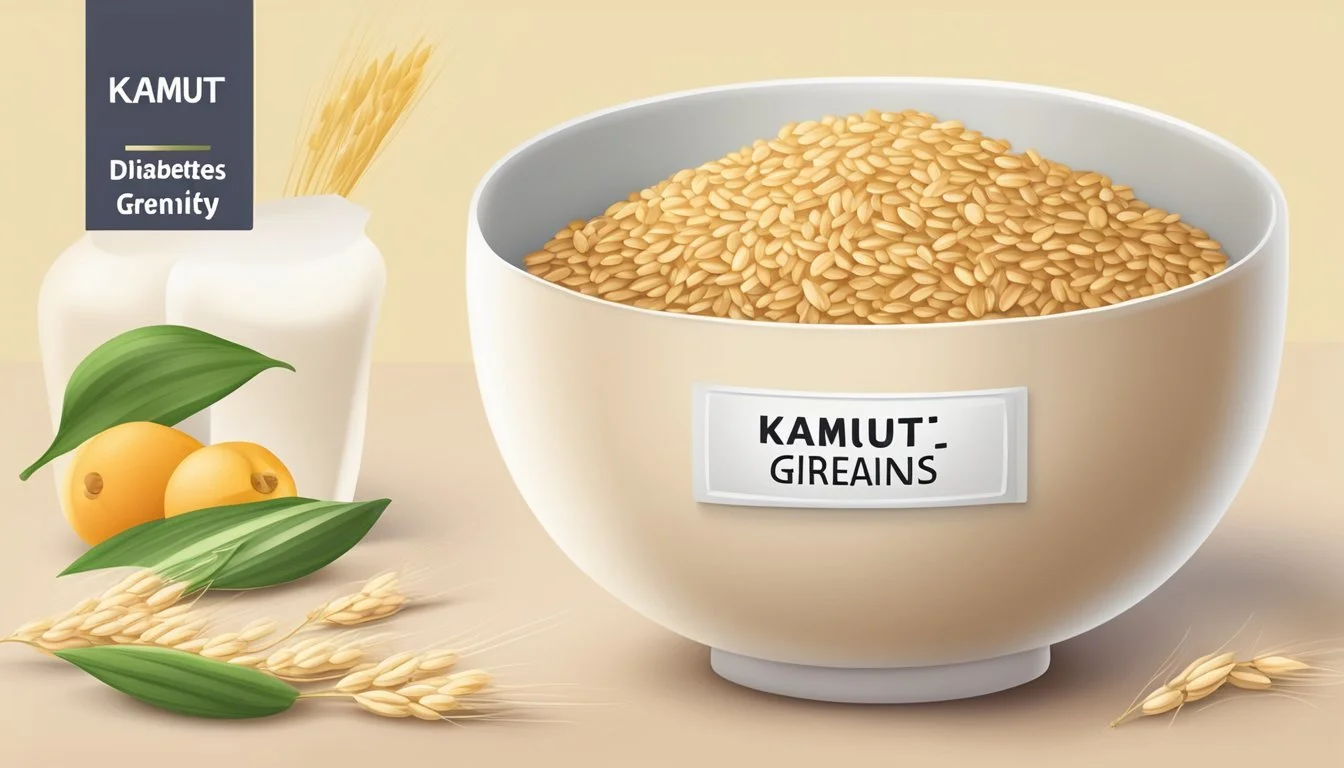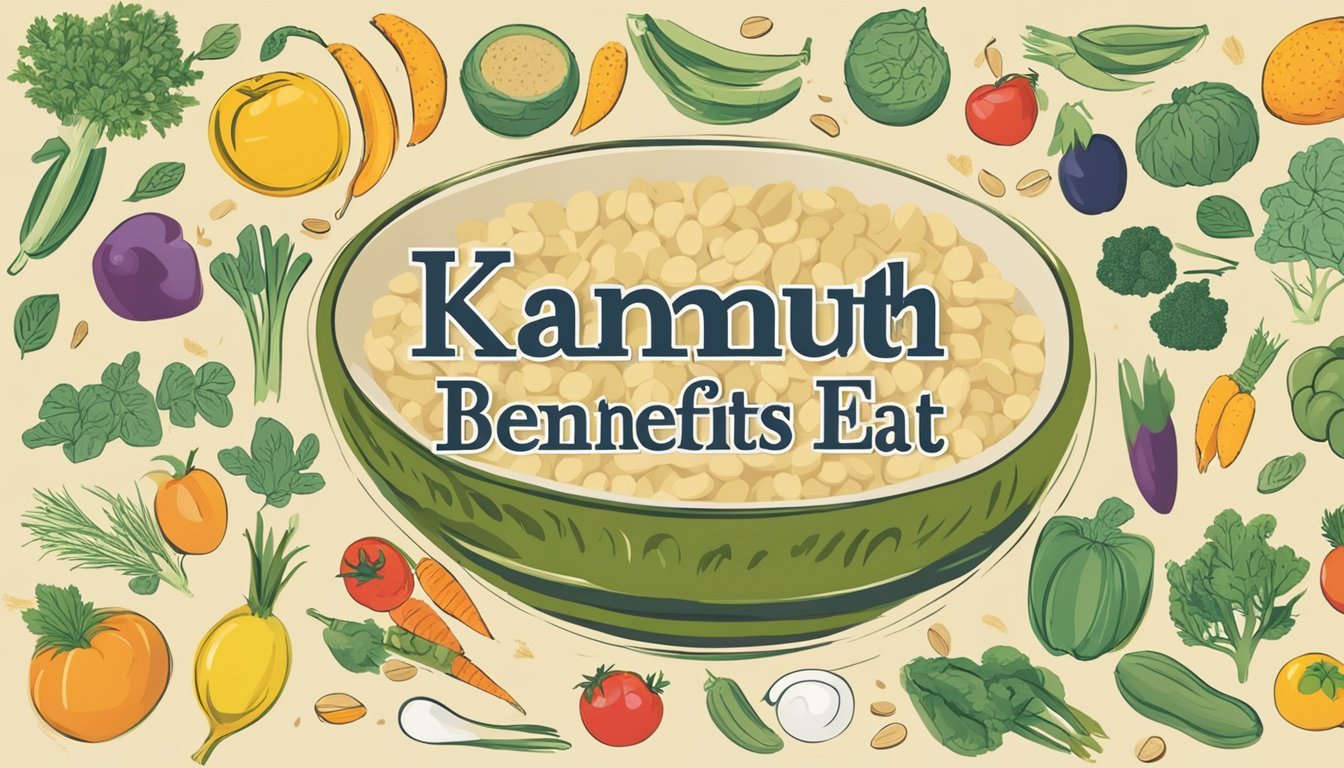Can Diabetics Eat Kamut? Exploring Health Benefits and Risks
Kamut, also known as khorasan wheat, is an ancient grain that has garnered attention for its nutritional benefits. For individuals with diabetes, it is crucial to consider the glycemic impact of their food choices. Kamut is generally suitable for diabetics because it has a low glycemic index, meaning it causes a slower rise in blood sugar levels.
In addition to its glycemic properties, Kamut is rich in fiber, providing 7.4 grams per serving, which aids in blood sugar control. Its high selenium content also contributes to its antioxidative properties, offering an added health benefit. This combination makes Kamut a compelling option for those managing diabetes.
Understanding what grains can be safely incorporated into a diabetic diet can be challenging. With its nutrient profile and minimal impact on blood sugar, Kamut stands out as a beneficial choice. By including Kamut in their diet, diabetics can enjoy an ancient grain that supports both health and taste.
Understanding Kamut
Kamut, also known as Khorasan wheat, is a nutrient-rich grain with numerous health benefits. This section explores its origins, nutritional components, and a comparison to modern wheat.
What Is Kamut
Kamut, or Khorasan wheat, is an ancient grain cultivated originally in the Middle East. Known for its large, chewy kernels and nutty flavor, it has gained popularity for its high nutritional value. The name "Kamut" is a trademarked term under which Khorasan wheat is marketed, ensuring that the grain meets specific quality standards.
Nutritional Profile of Kamut
Kamut is rich in proteins, fibers, vitamins, and minerals. A one-cup serving provides around 227 calories, primarily from carbohydrates. It boasts 7.4 grams of fiber, beneficial for digestion, and 5.3 grams of natural sugars. Additionally, Kamut offers significant amounts of potassium and magnesium, advantageous for heart and bone health. Its higher protein content, compared to common wheat, makes it a valuable addition to a balanced diet.
Kamut Vs. Modern Wheat
Kamut differs from modern wheat in several important ways. Studies have shown that while Kamut consumption can reduce total cholesterol and LDL cholesterol, modern wheat might increase these levels slightly. Furthermore, Kamut contains a higher quantity of essential minerals and fiber, contributing to better overall health. This makes Kamut a more nutritious alternative for those seeking to incorporate whole grains into their diet.
Kamut and Diabetes Management
Kamut khorasan wheat presents promising benefits for individuals with diabetes, particularly in terms of its glycemic index and its impact on blood sugar and insulin levels.
Glycemic Index of Kamut
The glycemic index (GI) of Kamut is relatively low compared to modern wheat varieties. This makes it a suitable option for diabetics looking to manage their blood glucose levels. Foods with a low GI are absorbed more slowly, causing a gradual increase in blood sugar. Kamut’s complex carbohydrate composition contributes to this effect. Consuming Kamut may help avoid sudden spikes in blood glucose, which is crucial for Type 2 diabetes management.
Impact on Blood Sugar Levels
Studies indicate that Kamut khorasan wheat positively affects blood sugar levels. Research from the Careggi University Hospital of Florence showed that replacing regular wheat with Kamut resulted in better management of blood insulin and glucose levels in diabetics. This improvement is attributed to the specific nutrient profile of Kamut, which includes higher levels of selenium and antioxidants that can support metabolic health and reduce oxidative stress.
Kamut in Diabetic Diets
Integrating Kamut into a diabetic diet can provide several health benefits, such as improved insulin sensitivity and stable blood sugar levels. Kamut's high fiber content aids in digestion and helps maintain a balanced glucose response. It can be included in various meals, such as whole grain breads, pastas, and cereals. For people with Type 2 diabetes, using Kamut as an alternative to modern grains could support better glucose management and overall health.
Health Benefits of Kamut
Kamut, also known as Khorasan wheat, offers multiple health benefits, particularly due to its high fiber content, essential nutrients, and protein levels. It supports cardiovascular health, improves digestive health, and aids in weight management.
Cardiovascular Health
Kamut is beneficial for cardiovascular health due to its rich nutrient profile. The fiber in Kamut helps lower cholesterol levels, which is crucial for reducing the risk of heart disease.
Magnesium present in Kamut assists in maintaining healthy blood pressure levels.
Polyphenols and antioxidants found in Kamut combat oxidative stress and inflammation, contributing to heart health. Regular consumption can help mitigate risk factors associated with metabolic syndrome, thus protecting overall cardiovascular function.
Digestive Health
The dietary fiber in Kamut significantly supports digestive health.
A single serving provides around 7.4 grams of fiber, which promotes regular bowel movements and prevents constipation. Adequate fiber intake is essential for maintaining a healthy gut microbiome.
Selenium, another nutrient present in Kamut, aids in protecting the gut from oxidative damage. This combination of fiber and selenium helps ensure effective digestion and nutrient absorption.
Weight Management
Kamut is a high-protein grain, making it an excellent food choice for weight management. The protein content aids in satiety, reducing overall calorie intake by making one feel full longer.
Additionally, Kamut's fiber content helps stabilize blood sugar levels, which is particularly beneficial for managing obesity and metabolic syndrome.
By incorporating Kamut into meals, individuals can enjoy a balanced, nutrient-dense grain that supports weight loss and maintenance efforts effectively.
Incorporating Kamut into a Diabetic Diet
Kamut, an ancient grain, can be a beneficial addition to a diabetic diet due to its potential effects on stabilizing blood sugar levels. This nutritious grain can be incorporated into various dishes such as bread, pasta, and cereals without compromising texture or flavor.
Cooking with Kamut Flour
Kamut flour can be used as a versatile ingredient in many recipes.
For bread lovers, Kamut flour can replace regular flour, providing a nutty flavor and a slightly chewy texture. It's important to adjust the moisture content in the recipe due to Kamut's higher protein content. Pasta enthusiasts can create homemade Kamut pasta which offers a richer taste and firmer texture than modern wheat varieties.
For a wholesome breakfast, Kamut flour can be used in pancakes or waffles. Given its compatibility with various recipes, Kamut flour can also be substituted in cookies, adding a unique flavor profile while keeping blood sugar levels in check.
Kamut in Baked Goods
Kamut can be incorporated into various baked products seamlessly.
Bread made from Kamut flour has a better glycemic index than bread made from modern wheat, which helps in managing diabetes. Crackers and biscuits made with Kamut provide a delightful crunch and are healthier snacking options. When it comes to muffins and cakes, using Kamut may require slight modifications in traditional recipes due to its higher absorption rate.
Apart from the common baked items, Kamut can be used in making pizza dough and savory tarts. These baked goodies offer a good way to enjoy your favorite foods while ensuring you consume whole grains that can help manage diabetes.
Savory Kamut Recipes
In savory dishes, Kamut can play a starring role.
Casseroles and stews featuring Kamut provide a hearty and nutritious meal option. Salads with cooked Kamut grains add a satisfying chew and rich flavor, making them more nutritious and filling. For those who enjoy soups, adding Kamut can enhance the texture and nutritional profile of the dish.
In addition to these, Kamut can be used as a base for stuffed vegetables or mixed into meatballs, offering an excellent alternative to rice or other grains. These recipes ensure that you can enjoy a diverse range of savory dishes while maintaining balanced blood sugar levels.
Potential Considerations for Diabetics
Diabetics considering Kamut for their diet need to be mindful of specific health considerations, particularly concerning gluten sensitivity and carbohydrate management.
Allergies and Gluten Sensitivity
Kamut, also known as Khorasan wheat, is an ancient grain that contains gluten. This poses a risk for individuals with Celiac Disease or non-celiac gluten sensitivity.
Those with gluten-related disorders should avoid Kamut, as consuming it could trigger adverse reactions such as gastrointestinal distress, inflammation, and nutrient absorption issues. It's important for anyone with a history of gluten intolerance to consult a healthcare provider before adding Kamut to their diet.
If a diabetic does not have gluten sensitivity, Kamut can be a nutritious addition, offering beneficial compounds like antioxidants and essential minerals.
Carbs and Meal Planning
Carbohydrate content is paramount for diabetics in managing their blood sugar levels. Kamut has a moderate glycemic index, making it a relatively better choice compared to refined grains.
When incorporating Kamut into the diet, portion size becomes crucial. Diabetics should balance Kamut intake with other low-glycemic foods. Monitoring blood glucose levels before and after consuming Kamut can help in understanding its impact.
For meal planning, combining Kamut with protein and fiber-rich foods can slow digestion and glucose absorption, maintaining stable blood sugar levels. Educating oneself on the nutritional profile of Kamut and incorporating it mindfully can help in effective diabetes management.
Kamut in Comparison to Other Grains
Kamut is a nutritious ancient grain distinguished by its high protein content and various health benefits. This section compares Kamut to other ancient grains and discusses the differences between refined and whole grains.
Kamut and Other Ancient Grains
Kamut vs. Quinoa: Quinoa is known for its high protein and unique amino acid profile, making it a complete protein. Kamut, while also high in protein, does not contain all nine essential amino acids in the same proportions as quinoa.
Kamut vs. Brown Rice: Brown rice is popular for its fiber content and versatile use in meals. Kamut surpasses brown rice in protein content and also offers a richer array of vitamins and minerals, including magnesium and potassium.
Kamut vs. Buckwheat: Buckwheat is lauded for its antioxidant and anti-inflammatory properties. Like Kamut, it is gluten-free and well-tolerated by those with wheat sensitivities. Kamut, however, typically has a higher protein content.
Kamut vs. Millet: Millet is another highly nutritious grain, known for its alkalizing properties. Kamut offers a more balanced per serving nutritional profile with additional protein and minerals.
Refined vs. Whole Grains
Whole Grains: Kamut is typically consumed as a whole grain, retaining all parts of the grain, including the bran, germ, and endosperm. This makes it richer in fiber, vitamins, and minerals compared to its refined counterparts.
Refined Grains: Modern wheat products, often consumed as white flour or white rice, strip away many of these beneficial components during processing. Kamut’s composition as a whole grain offers superior nutritional benefits, aiding in better blood sugar management which is essential for diabetics.
Oats and Barley: Both oats and barley are also primarily consumed as whole grains. Oats are particularly noted for their beta-glucan content, which can help regulate blood sugar levels. Barley offers similar benefits but has a slightly lower glycemic index compared to oats and Kamut, making it an excellent choice for blood sugar control.
Each comparison highlights the strengths and unique health benefits of Kamut when included in a balanced diet for individuals managing diabetes.
Lifestyle and Dietary Recommendations
Exercise and diet play crucial roles in managing diabetes effectively. Incorporating regular physical activity and adopting a balanced, nutrient-rich diet can help control blood glucose levels and support overall health.
The Role of Exercise in Diabetes Control
Regular exercise is essential for individuals with diabetes. Physical activity can help lower blood glucose levels and increase insulin sensitivity. The American Diabetes Association recommends at least 150 minutes of moderate-intensity exercise per week, such as brisk walking or cycling.
Aerobic exercises, like swimming and jogging, are beneficial for heart health. Strength training is also important as it improves muscle mass and boosts metabolism. It’s essential to consult with a healthcare provider to create an exercise plan tailored to individual needs and limitations.
Monitoring of blood glucose levels before and after exercise can help prevent hypoglycemia. Keeping hydrated and wearing appropriate footwear can prevent complications.
Adopting a Mediterranean Diet
The Mediterranean Diet is known for its heart-healthy benefits and can be particularly effective for people with type 2 diabetes. This diet emphasizes the intake of fruits, vegetables, whole grains, beans, nuts, and fish. Limited dairy products and red meat are also part of the diet.
KAMUT® wheat, an ancient grain, has been shown to have positive effects on glucose and insulin levels, making it a good substitute for modern wheat. Including KAMUT® in the diet can contribute to better control of blood glucose levels.
Avoiding processed foods and focusing on natural, unrefined products is crucial. Incorporating olive oil as a primary fat source and using herbs and spices for seasoning instead of salt are recommended components of the Mediterranean Diet.
Maintaining a balanced diet and regular exercise can help manage diabetes effectively and improve the quality of life for those affected.
Conclusion
Kamut, also known as Khorasan wheat, can be a beneficial inclusion in the diet of individuals with diabetes.
Rich in nutrients, Kamut offers a good source of protein, fiber, vitamins, and minerals, which are essential for maintaining overall health. Type 2 diabetes patients, in particular, may benefit from its low glycemic index and complex carbohydrate composition.
Studies indicate that replacing modern wheat with Kamut can lead to better blood insulin and glucose levels. This can contribute to improved blood sugar management and reduced risk of complications associated with diabetes.
Moreover, Kamut contains antioxidative properties that may support the body's defense against oxidative stress, which is often higher in diabetics. Choosing whole-grain Kamut products ensures that individuals receive maximum nutritional benefits.
Incorporating Kamut into a balanced diet, alongside regular physical activity, can aid in achieving and maintaining healthy blood sugar levels. This can be a valuable part of comprehensive lifestyle changes for diabetes management.
Hence, while considering the inclusion of Kamut, it remains important to monitor blood glucose levels and consult with healthcare professionals to tailor dietary choices to individual needs.







